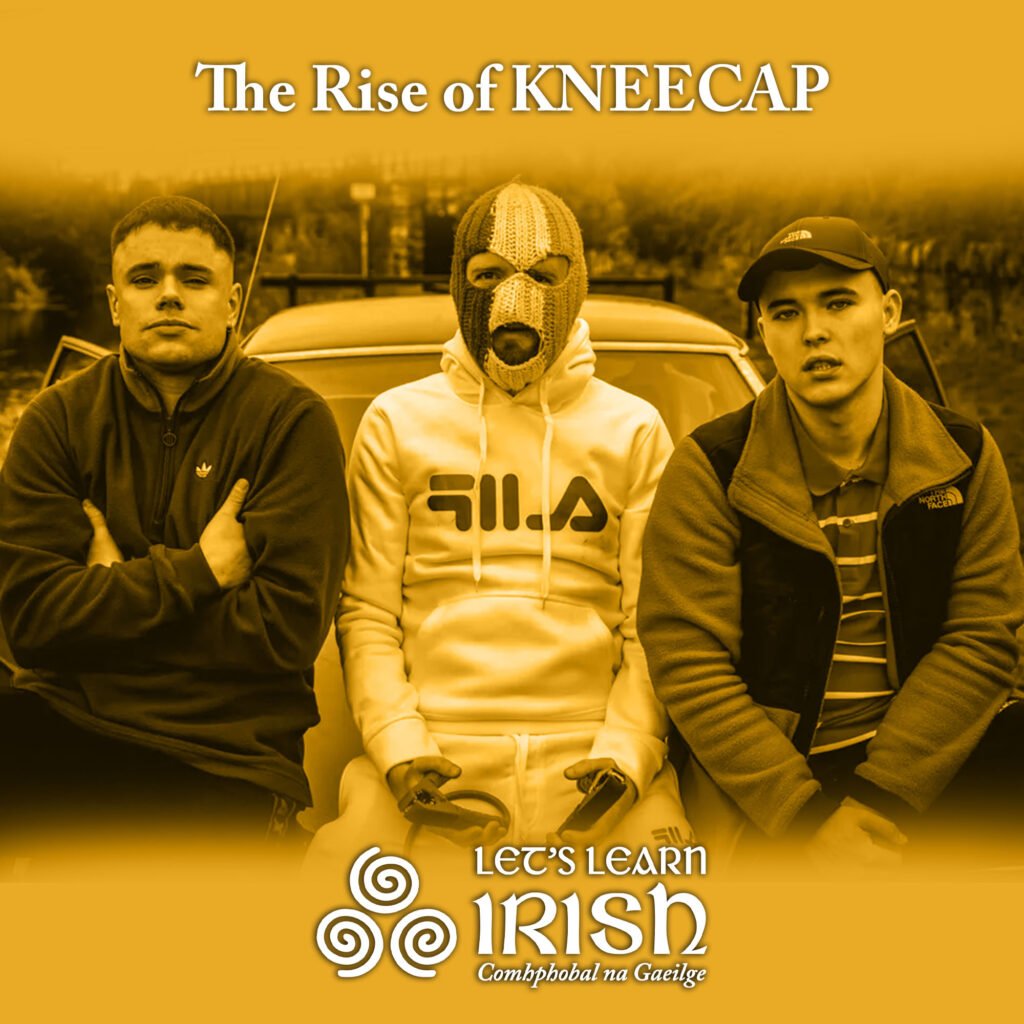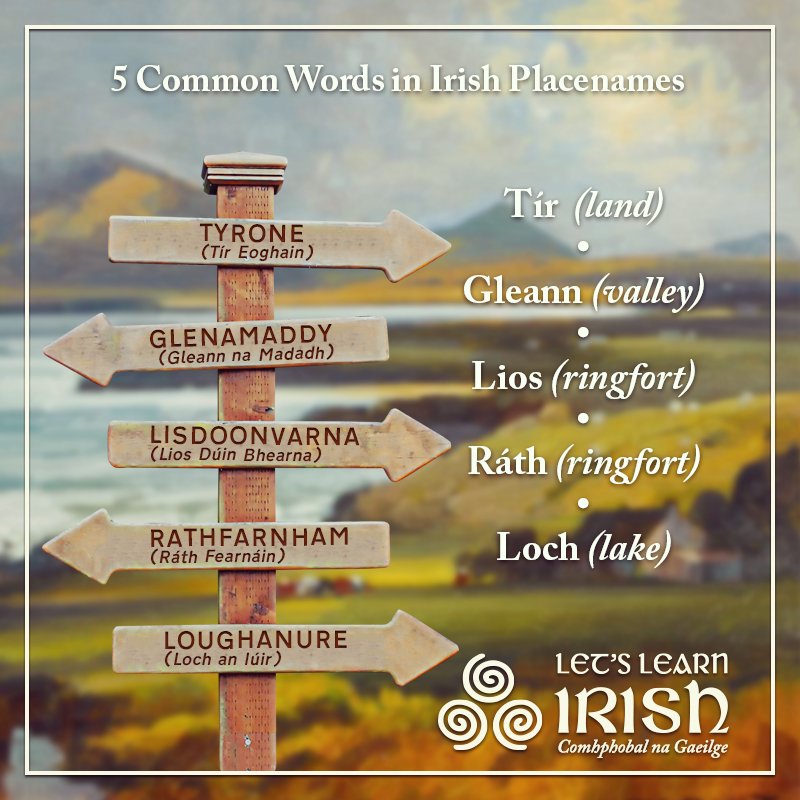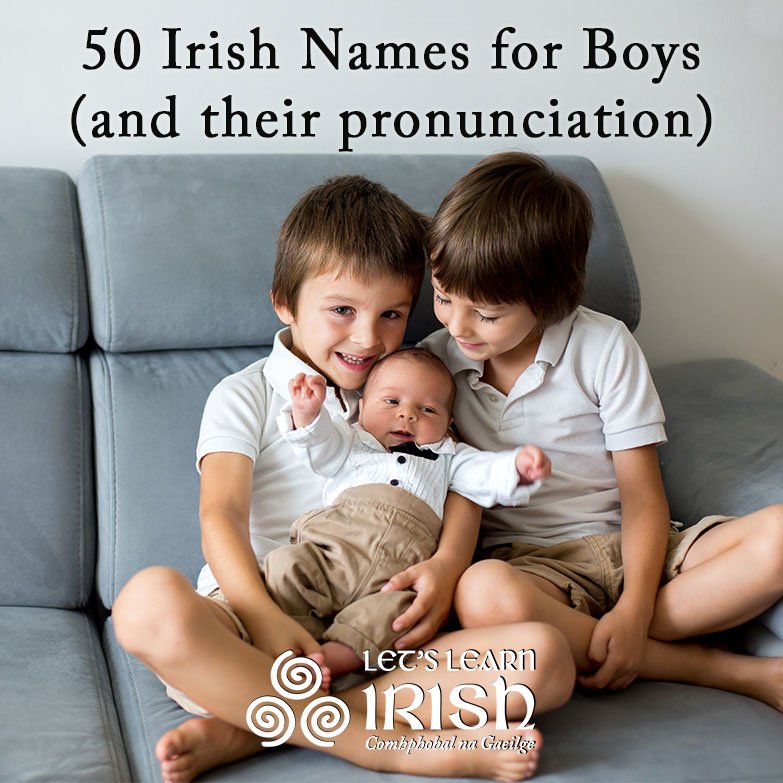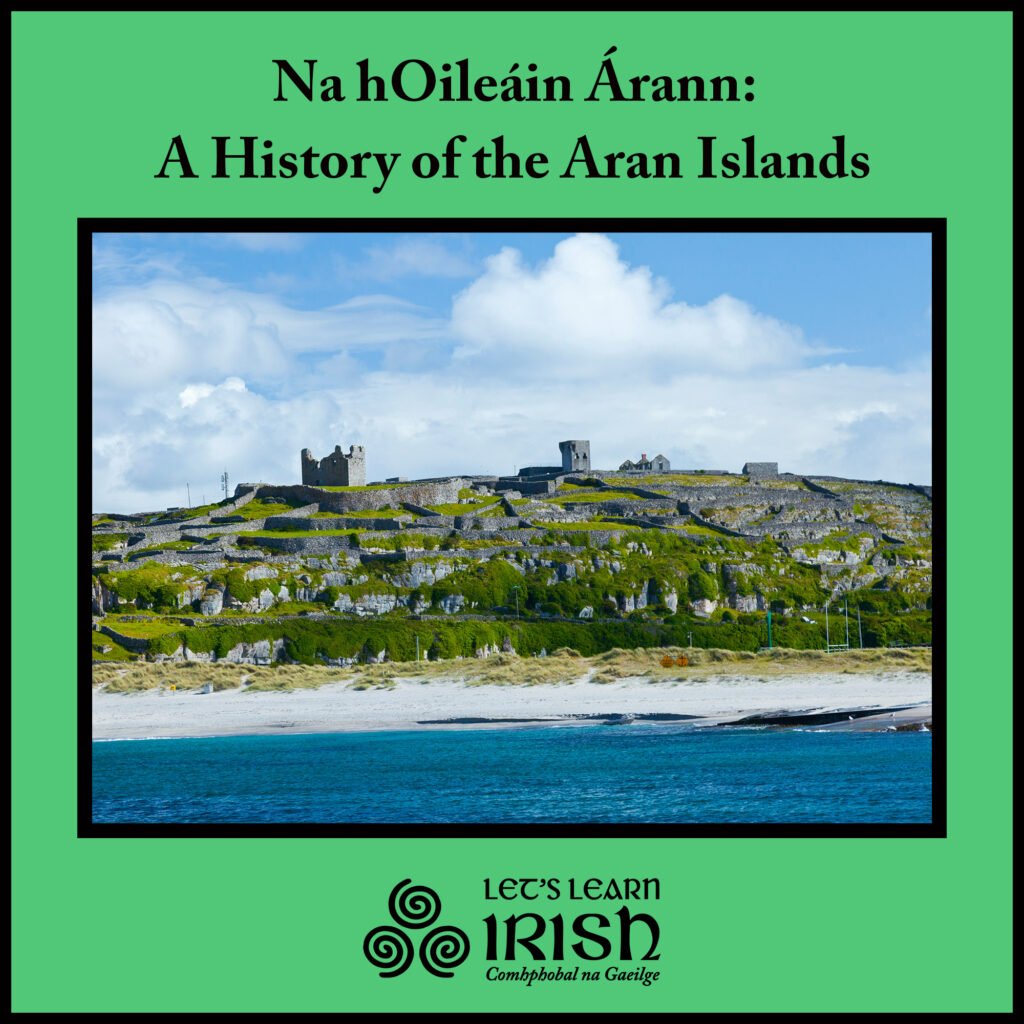Na Fíréin: Trailblazers of Irish Language Rock
The rise of Kneecap as the first Irish-language rap group made waves in Ireland, as well as abroad. They proved that the language can be fertile grounds for cutting edge music. However, they weren’t the first contemporary band to sing and perform in Irish. Instead, many older learners and speakers of Irish will remember, with nostalgia, Na Fíréin and their pioneering songs.
The Beginnings of Na Fíréin
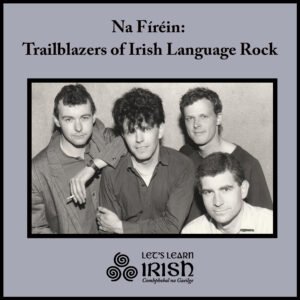 Na Fíréin was created from a 1984 performance in the small Gaeltacht of Rath Cairn. However, their origins trace back earlier.
Na Fíréin was created from a 1984 performance in the small Gaeltacht of Rath Cairn. However, their origins trace back earlier.
In the seventies, musicians Colm Mac Séalaigh, Gearóid Ó Murchú and Ken Mac Diarmada visited the Welsh cultural festival Eisteddfod. They were impressed by the contemporary bands they found singing in the Welsh language, as well as the reaction their music received. They went back home to Ireland, determined to do the same with the Irish language.
In 1973 the three men set up the group Tŷ Bach, which in Welsh means “little house.” They released the album Téanam Ort (I Got to You) with Outlet Records in 1974. Ten years later, they were invited to perform at the Celtic rock festival ROC1 in Rath Cairn.
To turn Tŷ Bach into more of a racbhanna (rock band), Colm Mac Séalaigh asked his fourth cousin, Eoin Smith, to play guitar, and his friends Fran McBride and Mike Brady to take up the drums and bass guitar, respectively. After a successful gig, the group played a few more times that summer as Tŷ Bach. By the end of the year, however, Colm Mac Séalaigh, Gearóid Ó Murchú, Eoin Smith and Fran McBride founded Na Fíréin.
Tír na nÓg
The band that would soon become Na Fíréin performed “Tír na nÓg” for the first time at ROC1. Tír na nÓg is the Celtic otherworld, a land of eternal youth, and the song recounts the tale of Oisín and Niamh’s visit there, one of the most famous stories from the Fenian Cycle of Irish mythology.
“Tír na nÓg” went on to be the band’s biggest hit. It was popularly sung at Gaeltacht camps and other Irish-learning events, as well as within the Irish speaking communities of the 80s and 90s. The song was released on Na Fíréin’s debut album, Sin Mar a Bhíonn in 1986. Other popular songs from the album, other than “Tír na nÓg” and the title track, include “Dífhostaithe” (Unemployed) and “Deireadh na Seachtaine” (The Weekend).
The Later Years of Na Fíréin
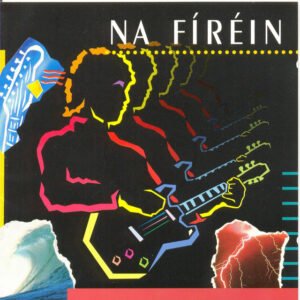 Between 1986 and 1989, Na Fíréin would perform at over sixty venues across Ireland, as well as made ten appearances on television. After 1990 the band didn’t travel as frequently, but still played at several favorite venues in the Gaeltacht. However, they did start their own label around that time, Gealt, and released their second album Beagáinín Níos Fearr (A Little Better) in 1991. Various musicians played with Na Fíréin throughout the years, including Caitríona Ní Threasaigh on méarchlár (keyboard) and Dónal Ó Faolain on sacsafón (saxophone).
Between 1986 and 1989, Na Fíréin would perform at over sixty venues across Ireland, as well as made ten appearances on television. After 1990 the band didn’t travel as frequently, but still played at several favorite venues in the Gaeltacht. However, they did start their own label around that time, Gealt, and released their second album Beagáinín Níos Fearr (A Little Better) in 1991. Various musicians played with Na Fíréin throughout the years, including Caitríona Ní Threasaigh on méarchlár (keyboard) and Dónal Ó Faolain on sacsafón (saxophone).
In 1994, Gael Linn released a 20-song album from the band. By then, they had mostly stopped performing. However, in 2012 the Irish-language television channel TG4 broadcast the program “’Na Fíréin Arís,” which included a gig recording at Belfast’s Irish language cultural center Cultúrlann.
Colm Mac Séalaigh later went on to produce two solo albums, Aon Scéal? in 2014, followed by 1967, released in 2022.
Learning Irish through Music
 It is not surprising that Tír na nÓg became a cult classic in the Irish community, and the song is ingrained in the mind’s of countless teenagers who attended ‘coláistí samhraidh’ (summer colleges) in the Gaeltacht each year! The 80s synth-style spoke very much to the type of rock music popular at the time, and the song was made to be an earworm.
It is not surprising that Tír na nÓg became a cult classic in the Irish community, and the song is ingrained in the mind’s of countless teenagers who attended ‘coláistí samhraidh’ (summer colleges) in the Gaeltacht each year! The 80s synth-style spoke very much to the type of rock music popular at the time, and the song was made to be an earworm.
For these reasons, as well as because of its straightforward lyrics, Tír na nÓg also became a popular learning tool. It was a way to get both young people and adults engaged in the Irish language, and a fun means to pick up more vocabulary. In fact, while research has always suggested that music is pivotal in language acquisition as an infant, more studies are beginning to explore the benefits of music in learning a second language.
If you’re interested in using music, or other audio material, in helping you improve your Irish, check out our article “10 Ways to Improve Your Irish Listening Skills.” It includes various resources to help you put your ear into action.

While other bands played songs in Irish, or translated English lyrics as Gaeilge, Na Fíréin was the first rock band to perform solely in the language. They proved Irish to not only be amenable to the type of 80s rock popular in English, but demonstrated that there was an appetite by Irish speakers and those learning the language for such music. Much like writing movements in Irish that drew international attention or movies made in the island’s native tongue, Na Fíréin played a small, but important part in the continued revival of the language and its reemergence on the world stage. They might have even paved the way for the current success of groups like Kneecap. Regardless of any of that, their music has already stood the test of time, and is expected to be around much longer.
Join the online Irish community – beidh fáilte romhat!
Take a Course, join a Comhrá session or attend a Ceardlann.
For more, follow us @LetsLearnIrish – bígí páirteach!

